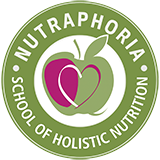6 Surprising Sources of Wheat
Did you know wheat is one of the eight most common foods to which people are allergic? Add to that food sensitivities and intolerances which are far more common than food allergies, and also affects millions of people.
What is the difference?
Allergy:
Food allergies are an immune response in the body that can be fatal. In extreme cases, ingesting or even touching a small amount of the allergen can produce an intense reaction. Allergy symptoms can include digestive symptoms, skin reactions such as hives, swelling, and itching; difficulty breathing, dizziness, wheezing, and ultimately death.
Note: Celiac disease is an autoimmune disease which involves an immune response as in the case of a food allergy, but also involves an inability to break down gluten.
Sensitivity:
Symptoms of food sensitivity vary, and often (especially in the case of wheat), can include neurological symptoms such as behaviour changes (common in children), lack of concentration, mood swings, ADHD, depression, anxiety, and memory impairment. While the symptoms can significantly impair your day to day life, they are not fatal as in the case of an allergy.
Intolerance:
Food intolerance occurs when you are missing an enzyme needed to digest a particular food. An example of this is being lactose intolerant, in which case the body does not have enough of the enzyme lactase required to digest dairy, or gluten intolerant where the body cannot effectively digest the gluten protein. The most immediate and telling symptoms of intolerance are generally digestive related and can include gas and bloating, diarrhea, constipation, cramping, and/or nausea.
Gluten intolerance vs wheat sensitivity:
It is important to distinguish between gluten and wheat sensitivities. Some people are reactive to wheat in isolation, where others are reactive to gluten protein in wheat. Those with a gluten specific sensitivity, have to also abstain from other grains such as barley and yew which also have the gluten protein. Those with a wheat specific sensitivity, are generally fine eating other grains with no reactive issues (unless of course if a blood test indicates otherwise).
Here is the problem for those sensitive to wheat: not all foods labelled gluten-free are wheat free. Some may contain ingredients that are originally derived from wheat, but are considered to be free of the gluten protein.
Here is the problem for those sensitive to the gluten protein: foods that are labeled “wheat-free” may not be suitable for someone who follows a gluten-free diet. The gluten protein occurs in wheat, but also in barley and rye; both which may be found in wheat free products.
Here Are The 6 Surprising Sources:
1) Beauty products
Although gluten molecules are considered too large to be absorbed through the skin, you still may be at risk for dermatitis or other inflammatory skin conditions if you use wheat contaminated beauty products. That said, also keep in mind that hand to mouth exposure can cause gluten to enter the digestive system and result in an immune response. A few things to look for on the label include Triticum aestivum, tritium vulgare bran, germ, gluten, hydrolyzed vegetable protein, protein or starch, glaidin.
.
2) Vitamin Supplements
When products may be used as a filler or additive in supplements. To identify grain based fillers, look for names such as dextrin, maltodextrin, food starch, textured plant protein, artificial flavours and colours, MSG, wheat germ, natural flavours, and hydrolyzed vegetable protein.
.
3) Medications
While The most common type of starch used is generally corn based, there is also a chance that a wheat derived starch has been used.
.
4) Ice cream
Used as a filler or thicker, wheat is sometimes found in ice cream. While it is uncommon, it still warrants a label check.
.
5) California Roll
Is your California roll contaminated? Imitation crab meat is often used unless you specifically order real crab. Imitation crab is often just fish bits combined with food starch and flavourings. The starch and flavourings are two areas of concern for wheat. While we are on the topic of sushi, also be on alert for wasabi and soy sauce; all of which have the potential to contain wheat. When in doubt ask.
6) Bouillon Cubes
As with many packaged spice combinations such as gravy and taco mix; you may find gluten in some brands of bouillon cubes. The key ingredient to look for and avoid is maltodextrin, which is a gluten product. Wheat may also be present in commercially prepared chicken broth, beef broth, or stock so as always, be sure to read labels.
Also Know As:
A food with many other names. When reading labels, you are not just looking for “wheat” or “gluten”; you also must be aware of the long list ingredients that may contain one or both of them.
Things like…
- artificial flavoring
- triticum (wheat)
- natural flavoring
- caramel color
- dextrin
- gelatinized starch
- modified starch
- modified food starch
- vegetable starch
- glucose syrup
- hydrolyzed vegetable protein (HVP)
- maltodextrin
- monosodium glutamate (MSG)
- surimi
- textured vegetable protein
- vegetable gum
- duram
- kamut
- bulgur
- genus Secale (barley)
- triticum
- semolina
- spelt
- malt
Quite the list!
The takeaway?
When in doubt, avoid. In general, processed foods full of additives should be eaten sparingly (if at all!), while single ingredient foods are the best bet not just for people with allergies, intolerances, or sensitivities; but also for anyone who wants to live a healthy, vibrant life.


